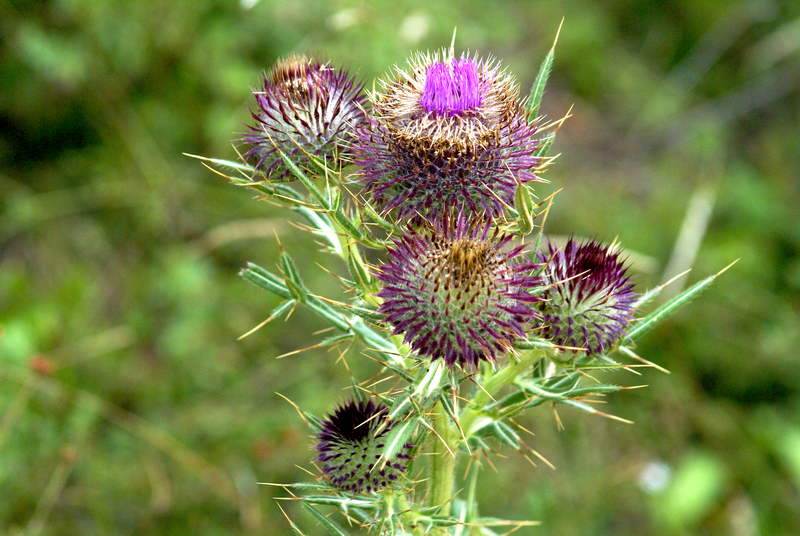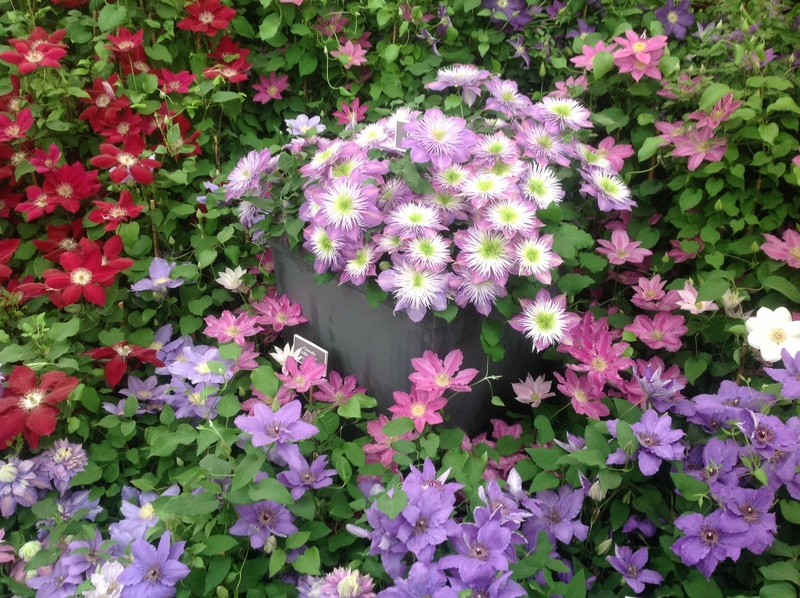Cultivating a Dog-Friendly Garden Adventure
Posted on 16/09/2025
Cultivating a Dog-Friendly Garden Adventure: Transforming Your Backyard into a Canine Paradise
Are you dreaming of a lush oasis in your backyard but worried about your furry friend's safety and happiness? Welcome to the ultimate guide to cultivating a dog-friendly garden adventure. With careful planning and a pinch of creativity, you can create an outdoor paradise that delights both you and your canine companion. This comprehensive article will walk you through practical tips, clever design ideas, and essential plant safety information to ensure your garden adventure is fun, safe, and rewarding for all.
Why Create a Dog-Friendly Garden?
A dog-friendly garden goes beyond just letting your pup run around on the lawn. A thoughtfully designed garden provides mental stimulation, physical exercise, and sensory enrichment for your dog. Furthermore, it prevents destructive behavior (like digging up your favorite plants) by catering to your dog's natural instincts and needs. A well-planned garden creates harmonious co-existence between beautiful landscaping and a joyful pet environment.
Benefits of a Dog-Friendly Outdoor Space
- Promotes physical health through increased movement and play
- Reduces boredom by offering new sights, smells, and textures
- Strengthens the bond between you and your pet through shared activities
- Encourages positive behavior by satisfying your dog's instincts
- Keeps your dog safe from dangerous plants and garden chemicals

Planning Your Dog-Friendly Garden Adventure
Before planting or redesigning, assess your dog's habits, breed, and size. Some dogs are avid diggers, while others prefer lounging. Understanding your pet's personality helps you create a canine-friendly garden tailored to their needs.
Essential Elements for a Dog-Centric Garden
- Safe plants and materials
- Secure fencing and boundaries
- Paths for exploration
- Dog-safe mulch and ground covers
- Shade and shelter
- Water features (hydration & play)
- Play and digging zones
Choosing Safe Plants for Your Dog Adventure Garden
The foundation of a dog-friendly garden adventure is plant selection. Many common landscaping plants are toxic to dogs, so it's crucial to research and choose only pet-safe options. Avoid hazards and beautify your space with these suggestions.
Dog-Safe Plants to Include
- Sunflowers
- Camellias
- Snapdragons
- Roses
- Basil, thyme, and rosemary (herbs safe for dogs)
- Marigolds (tagetes)
- Spider plants
- Blue fescue grass
Plants to Avoid
- Azaleas and rhododendrons
- Lilies
- Daffodils
- Foxgloves and oleander
- Tulips
- Sago palm
- Grapes & raisins (even vines are toxic!)
Tip: For a comprehensive list, consult the ASPCA's database of toxic and non-toxic plants.
Designing the Perfect Dog Garden Adventure
Designing a dog garden paradise involves combining style with safety and fun. Consider your dog's needs as you decide on pathways, play areas, and plant beds.
Dog Paths and Exploration Routes
Dogs love to patrol and sniff. Create dedicated paths in your garden. Use dog-friendly materials like flagstone, pea gravel, or bark mulch (avoid cocoa mulch, which is toxic). Make sure paths are wide enough for zoomies and supervise your dog until they're familiar with the routes.
Secure Boundaries and Fencing
A critical part of any dog-friendly yard is reliable containment. Opt for fencing that's tall enough for your breed and check for gaps or weak spots. If your dog is a jumper or digger, reinforce the base with buried chicken wire or hardscaping elements.
Shade, Shelter, and Rest Zones
Canines are sensitive to heat. Integrate shady retreats using trees, bushes, pergolas, or purpose-built dog shelters. A raised bed or cooling mat under a tree provides a welcome lounge spot during sunny adventures.
Water Features for Hydration and Play
- Dog-accessible fountains or ponds
- Small splash pools
- Sturdy water bowls placed in the shade
Never allow dogs unsupervised access to deep water, and use non-toxic, algae-resistant treatments.
Designing Digging and Play Zones
If your dog loves to dig, why not channel that energy? Designate a sandbox or mulched area for digging adventures. Hide toys or treats to create a positive association. Avoid using sharp-edged gravel or stone.
- Durable toys and agility obstacles
- Sand or soft soil for digging
- Mounds or tunnels for exploration
Pet-Safe Mulch and Ground Covers
Steer clear of cocoa mulch and opt for cedar mulch, pine bark, or natural grass. For high-traffic zones, clover, creeping thyme, or Irish moss are paw-friendly alternatives.
Maintaining a Dog-Friendly Yard
Even the best-designed dog-friendly gardens need ongoing care. Regular checks and gentle correction teach your dog garden boundaries while preserving your landscaping efforts.
Protecting Plants and Beds
- Use raised beds or decorative fencing to shield delicate plants from exuberant paws.
- Choose robust, non-toxic plants for high-traffic zones.
Training Tips for Happy Garden Adventures
- Supervise and redirect: If your dog starts misbehaving, gently guide them to the correct area.
- Reward positive behavior: Praise your dog for digging in their designated spot or using the paths.
- Set boundaries: Teach basic commands to prevent trampling or nibbling.
Common Garden Hazards for Dogs
Cultivating a pet-safe garden adventure includes being aware of common risks.
- Chemical treatments: Avoid pesticides, weed killers, and fertilizers not labeled as pet-safe.
- Sharp objects: Pruning shears, rakes, and edging materials should be secured.
- Mushrooms: Many wild mushrooms can be dangerous if ingested--remove promptly.
- Compost piles: Keep out of reach, as spoiled food and fungi may be harmful.
- Thorny or spiky plants: Roses are mostly safe, but trim thorns to avoid paw injuries.
Paw and Skin Protection
Hot surfaces (like paving stones) can burn sensitive paws in summer. Provide shaded paths or lawns for comfortable navigation. Wash your dog's paws after gardening sessions to remove sap, burrs, or allergens.
Fun and Enrichment in the Dog Garden
Cultivating a dog garden adventure is about more than safety--it's about building a space your furry friend loves to explore and share with you!
Enrichment Activities to Try
- Agility equipment: Set up tunnels, jumps, and weave poles for active breeds
- Scent trails: Hide treats for your dog to sniff out along garden paths
- Water games: Use sprinklers or splash pools for summer fun
- Buried treasures: Bury favorite toys in the digging area to keep your dog entertained
- Interactive play: Spend time outdoors tossing balls or playing hide-and-seek
Inviting Your Dog to Garden with You
Dogs are naturally curious and eager to participate in your activities. Whether you're pruning, watering, or simply relaxing, include your dog so they associate the garden with fun and togetherness.
Year-Round Adventure: Seasonal Tips for Dog-Friendly Gardens
Each season brings new opportunities--and a few challenges--for your dog-friendly garden adventure.
- Spring: Watch for newly toxic spring bulbs (like tulips and daffodils).
- Summer: Provide plenty of shade and water; avoid applying fertilizers near play zones.
- Fall: Rake up leaves frequently to prevent mold or bacterial growth that can upset tummies.
- Winter: Use pet-safe de-icers and rinse paws to prevent salt irritation.

Frequently Asked Questions: Cultivating a Dog-Friendly Garden Adventure
How can I prevent my dog from digging up my garden beds?
Redirect digging behavior by providing a dedicated digging area. Use positive reinforcement, bury treats or toys, and gently discourage digging in off-limits zones. Raised or fenced beds also help.
What are the best ground covers for a dog-friendly landscape?
Choose clover, creeping thyme, buffalo grass, or artificial turf. These tolerate heavy foot traffic and are generally safe for pets.
Are there fertilizers and pesticides safe for dogs?
Use only pet-friendly, organic fertilizers and avoid any chemical treatments not specifically labeled as safe. Always follow manufacturer instructions and let treatments dry before allowing pets access.
How do I stop my dog from eating plants?
Choose non-toxic, robust plants. Monitor your dog during early exposure to the garden, set boundaries using training, and use bitter sprays or decorative barriers if needed.
Conclusion: Creating Memories with Your Dog in the Garden
Cultivating a dog-friendly garden adventure is an ongoing process--one that pays off in the form of happy, healthy pets and beautiful, thriving landscapes. With careful plant selection, smart design, and creative enrichment, your garden can be a place of shared discovery and joy. Your four-legged friend will love a safe, stimulating environment--and you'll love seeing your backyard come alive with wagging tails and blossoming beauty.
Start your dog-friendly gardening journey today--because the best adventures are the ones you share!

